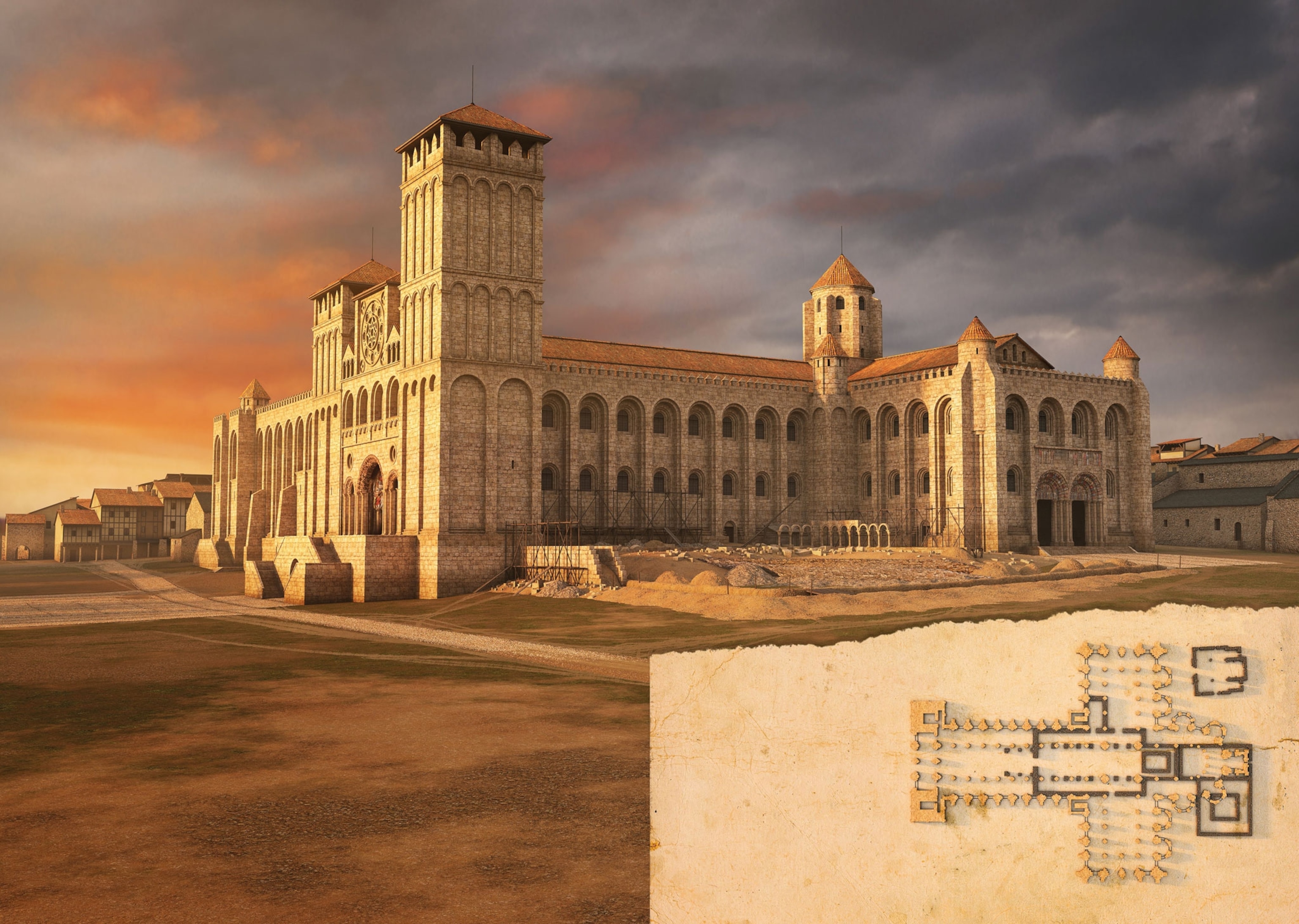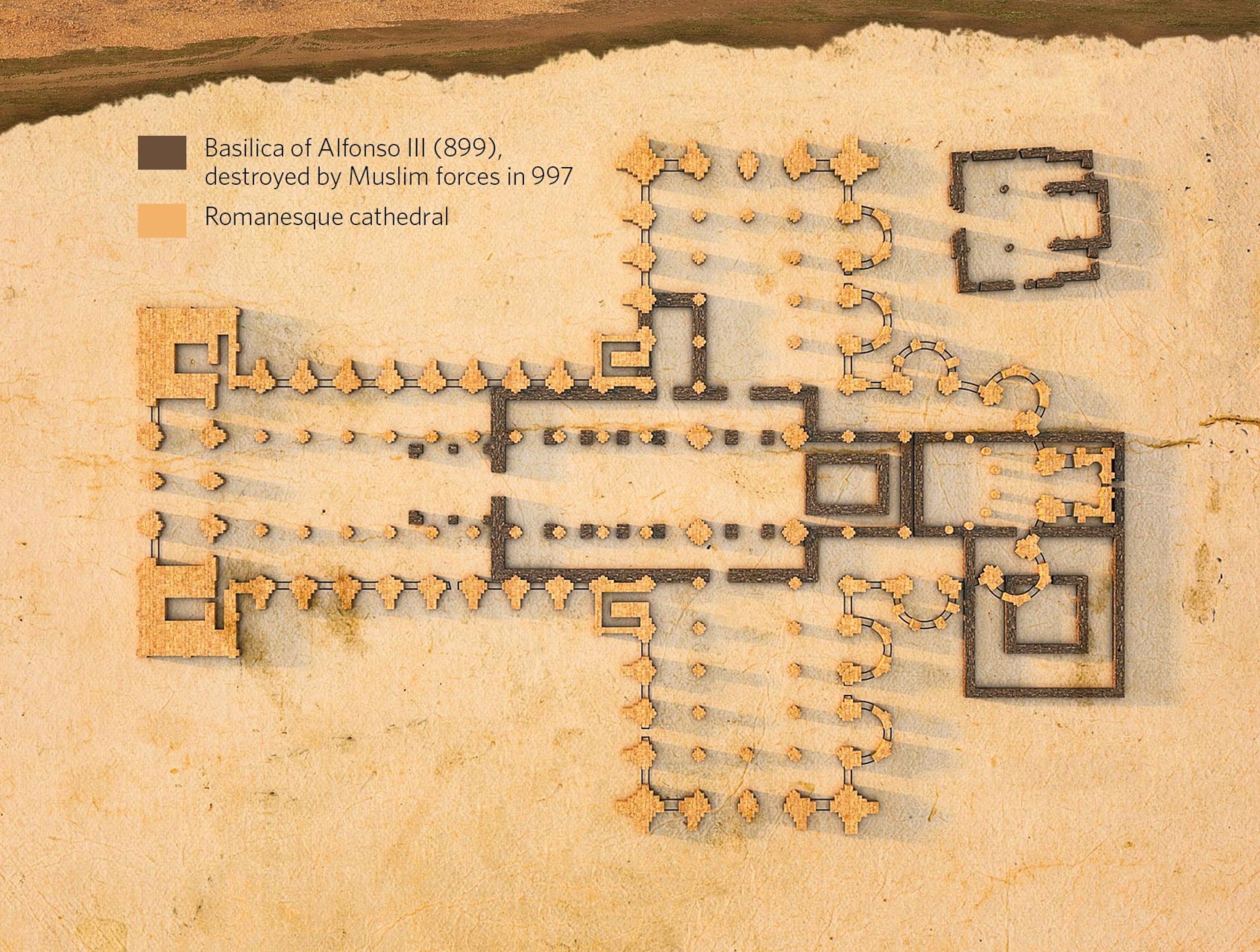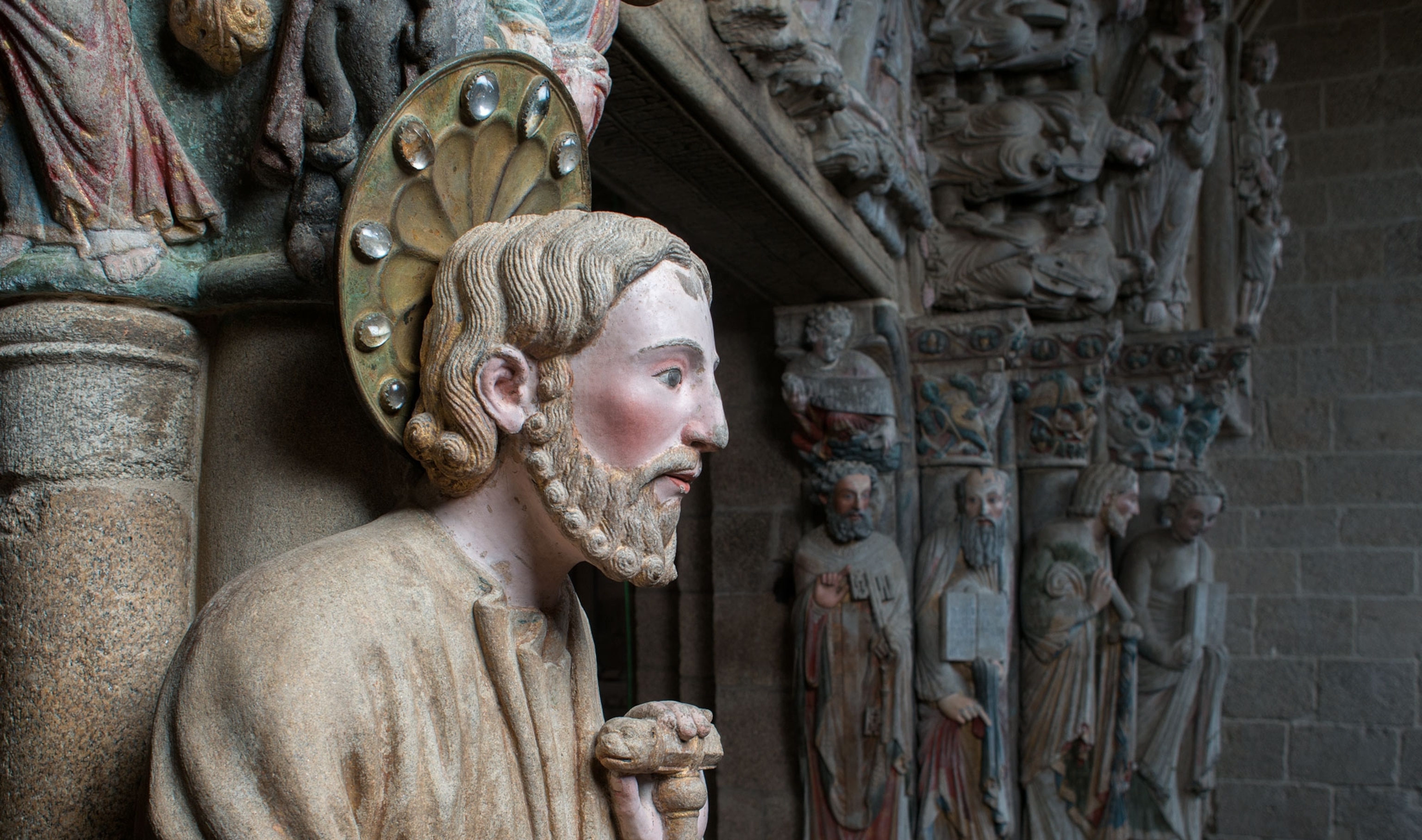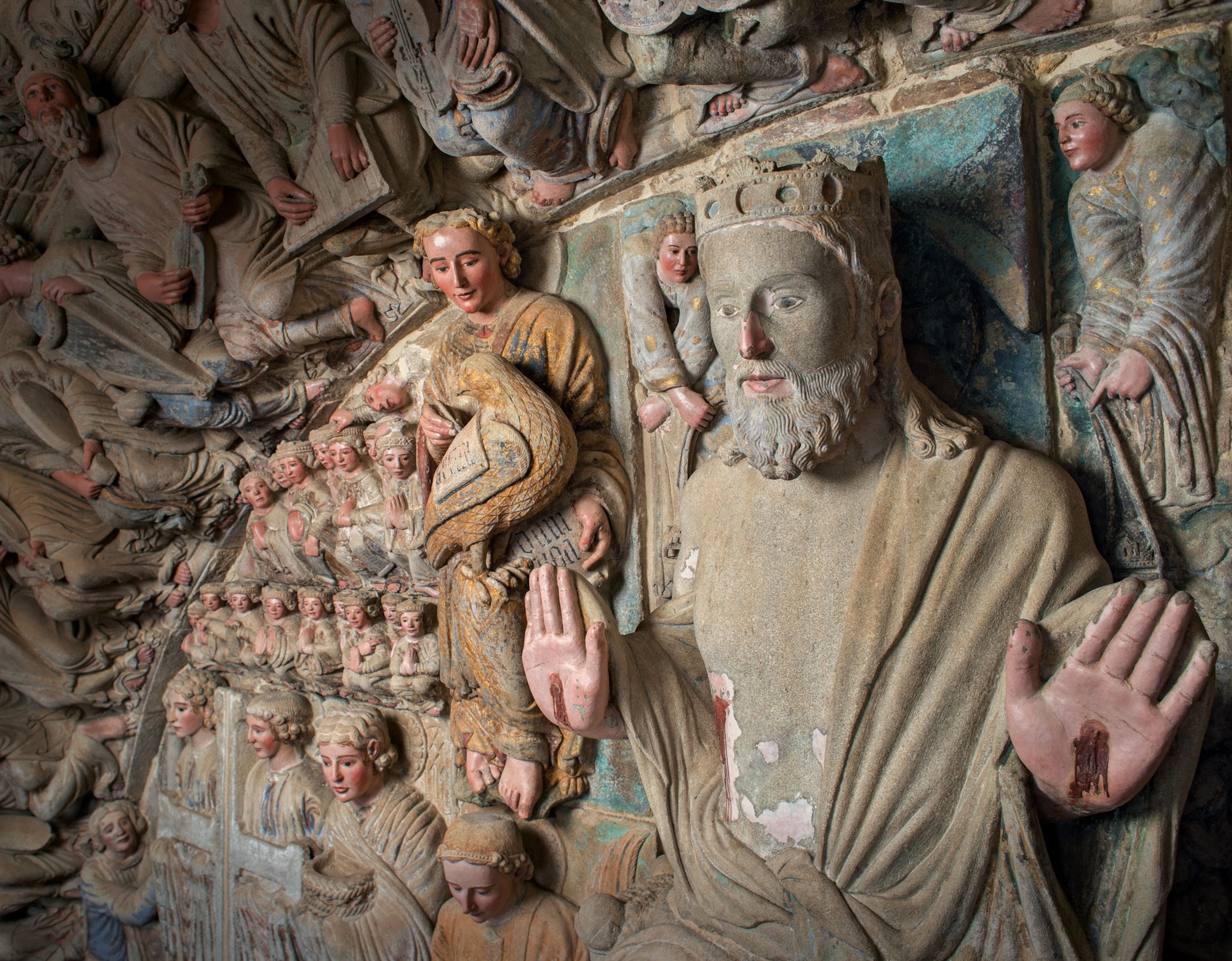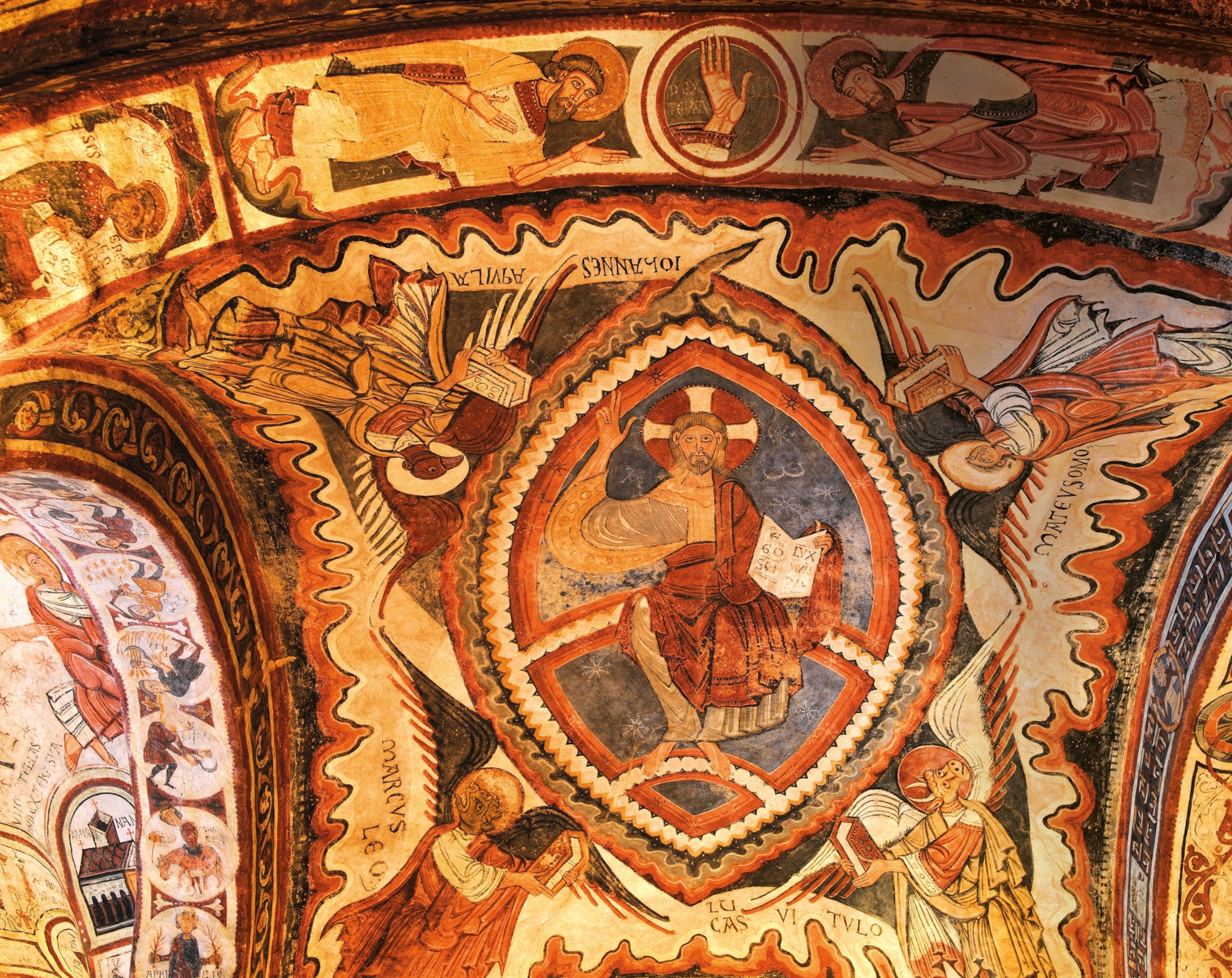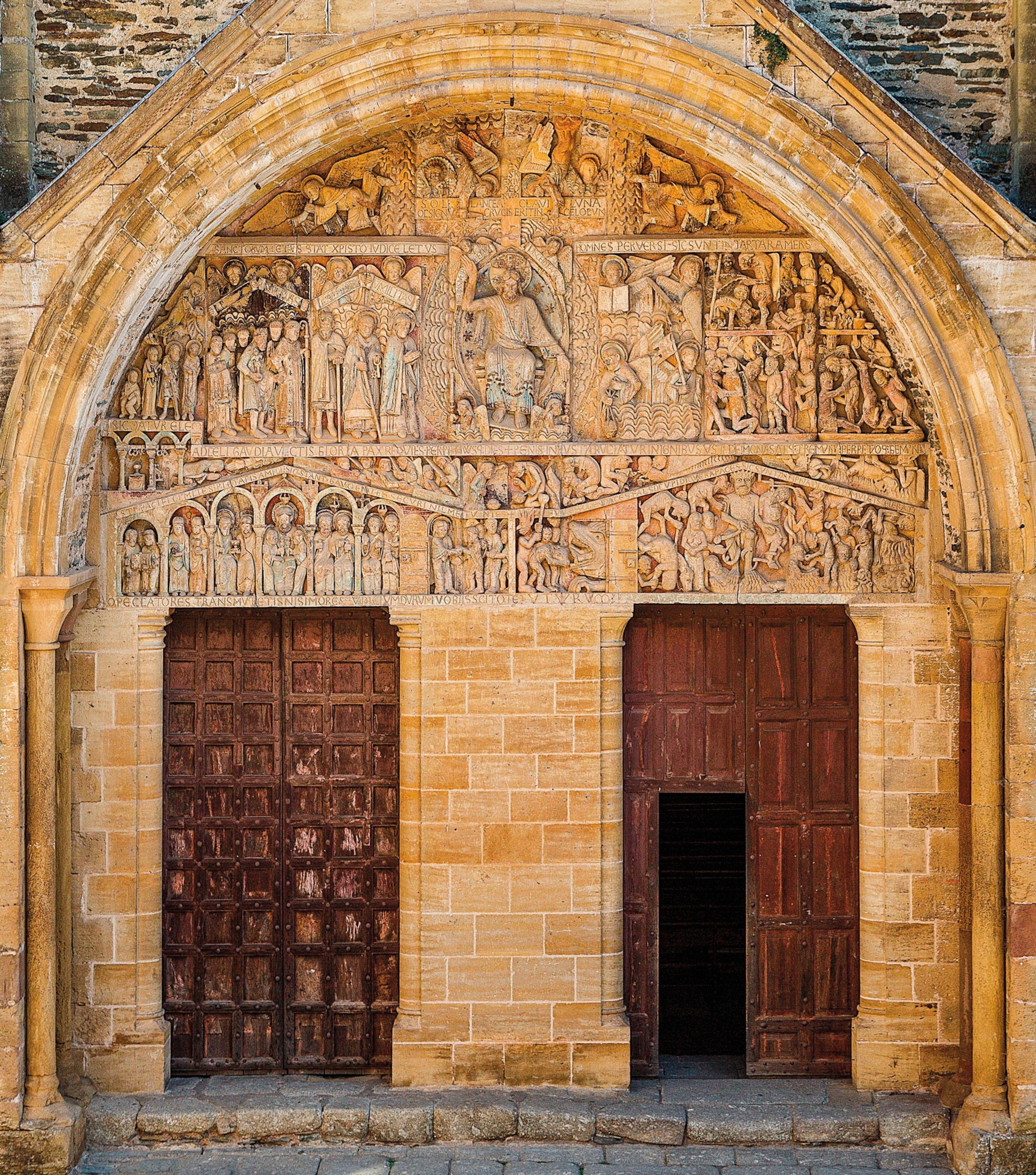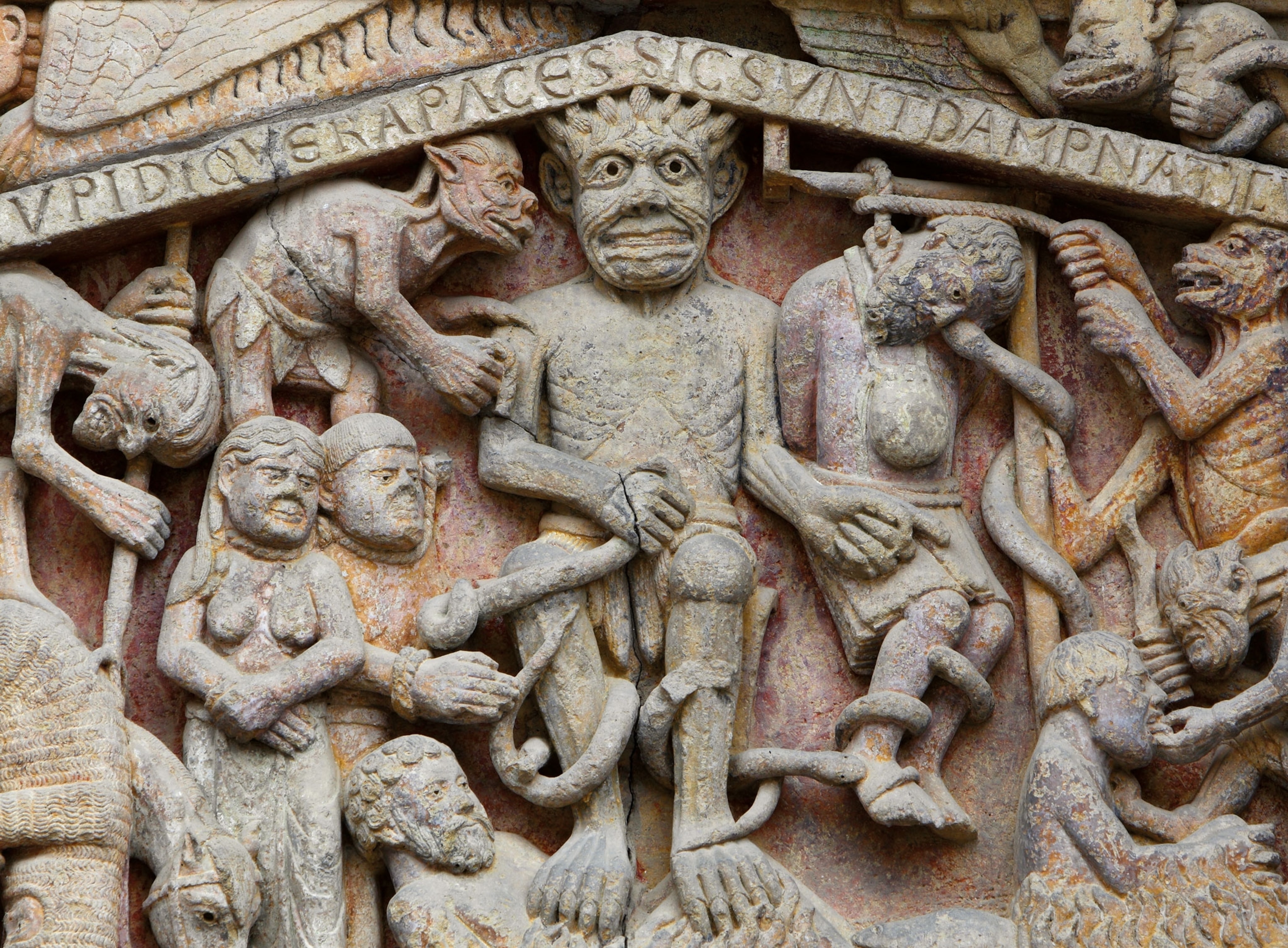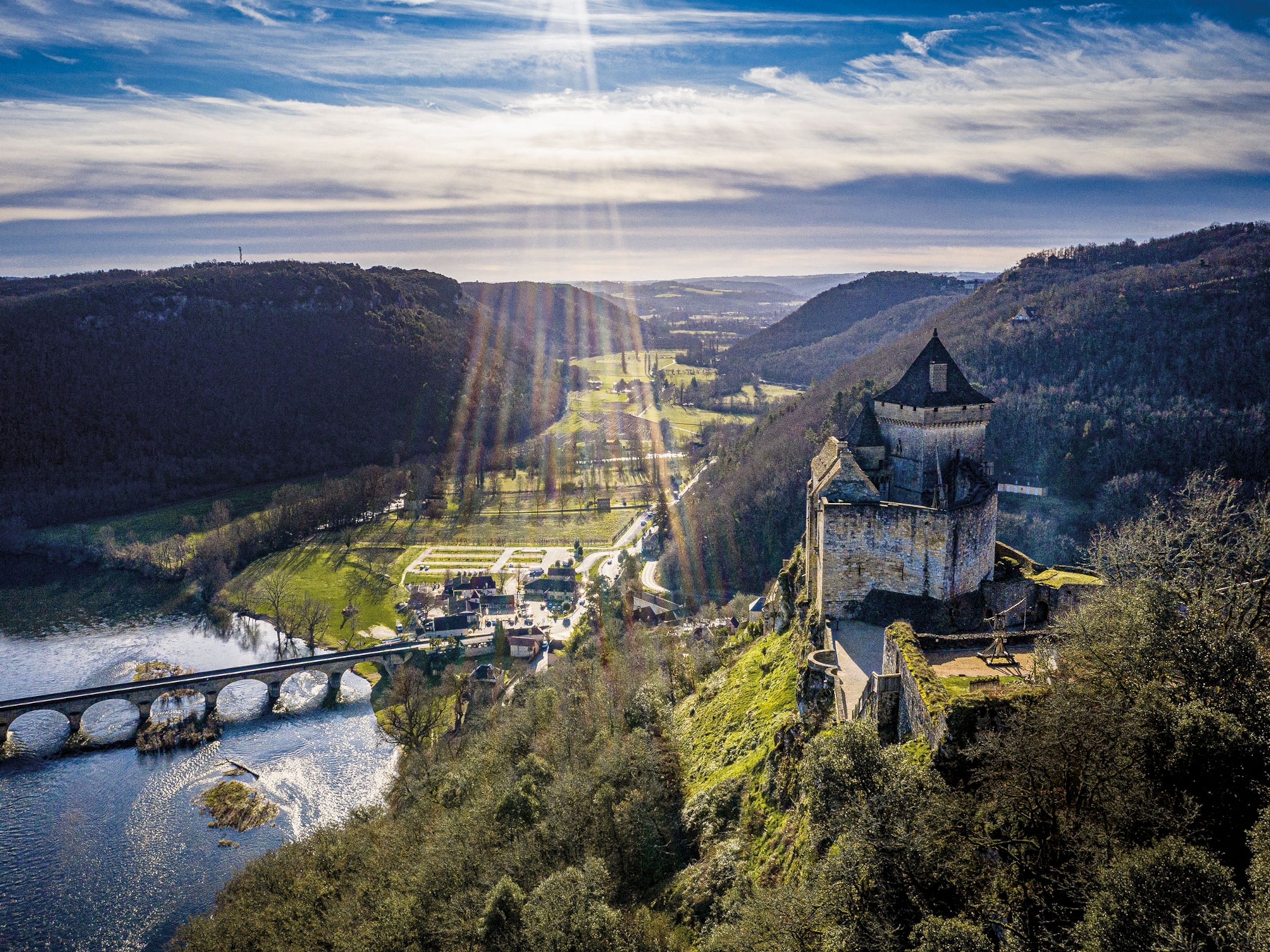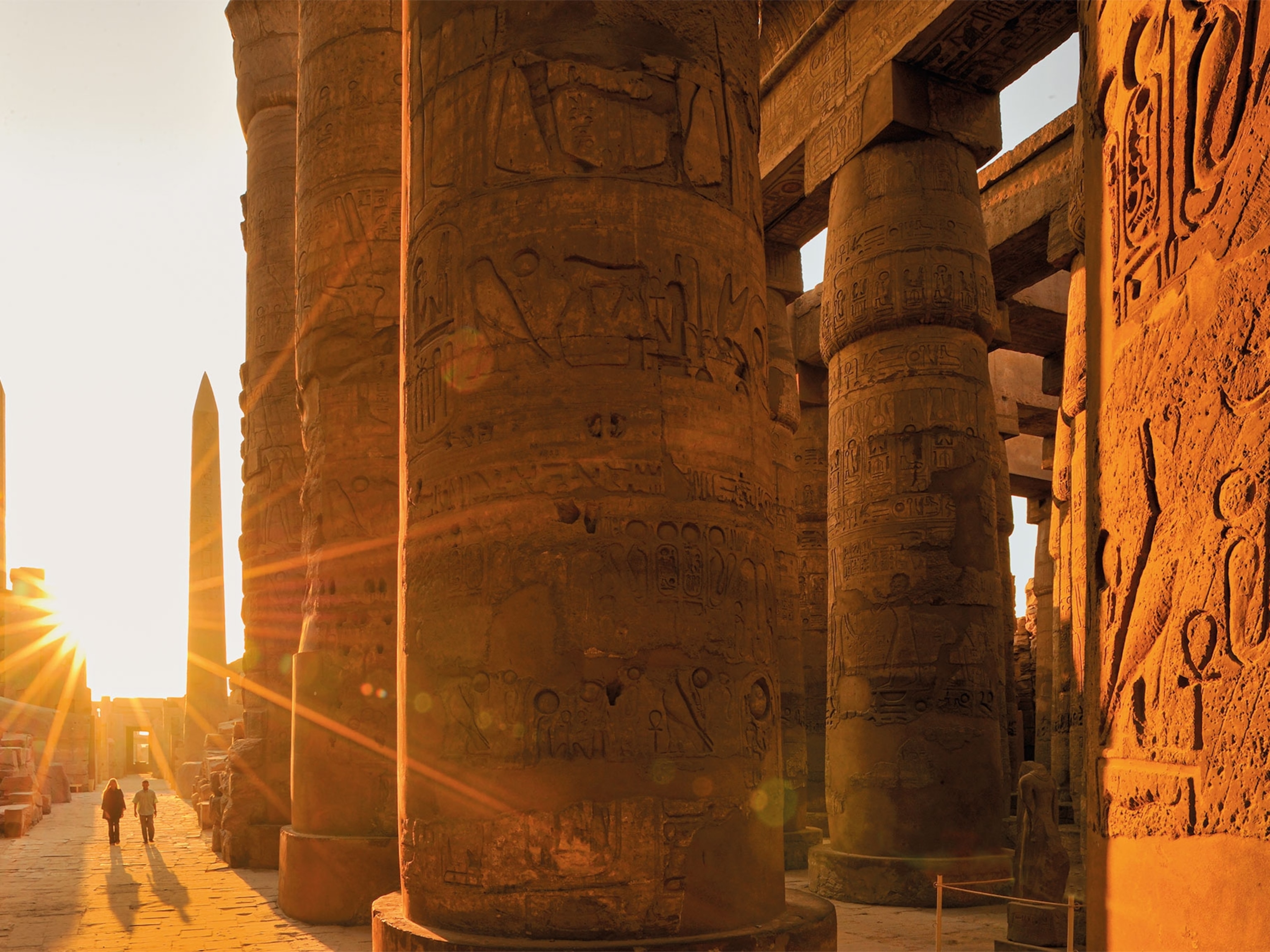Majestic medieval churches ascended along Christian pilgrims' paths
People and wealth moved along the pilgrimage routes of Europe, sparking the building of Romanesque churches to welcome travelers and house holy relics.

Christian Europe experienced an upsurge in confidence in the 11th century. In 1095 Pope Urban II rejuvenated the church by launching the successful First Crusade to wrest the Holy Land from Islam. All over Europe, Christians were traveling to sites on pilgrimages to view holy relics and sacred objects. These journeys were growing in popularity, as they disseminated people, ideas, and money from place to place.
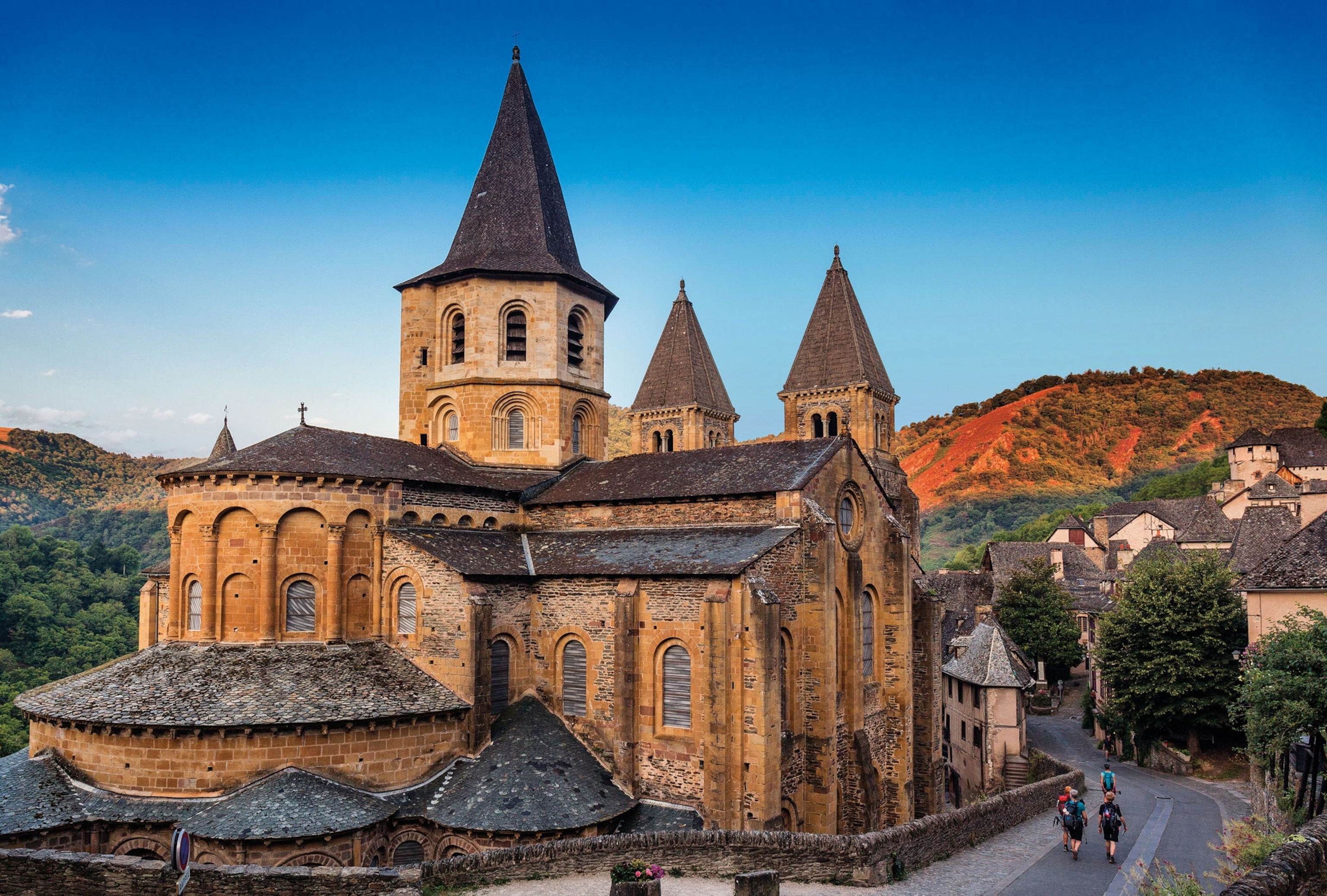
Borne along on the tide of these changes, a new architectural style was spreading across Europe. Cladding the Christian lands with “a white mantle of churches,” in the words of the 11th-century Cluniac monk Radulfus Glaber, similar building traits could be seen along these pilgrimage paths. Characterized by rounded arches, sturdy stone columns, and ornate carvings depicting biblical stories, this new style was dubbed “Romanesque” by later historians. It was not Roman in the classical or pagan sense but in the architectural. It used the concept of a Roman basilica as a foundation. These buildings’ structure and ornamentation reflected an idea of Roman monumentality, but these new sacred spaces were Christian, reflecting the spread of this faith across Europe. (Discover these extraordinary European cathedrals.)
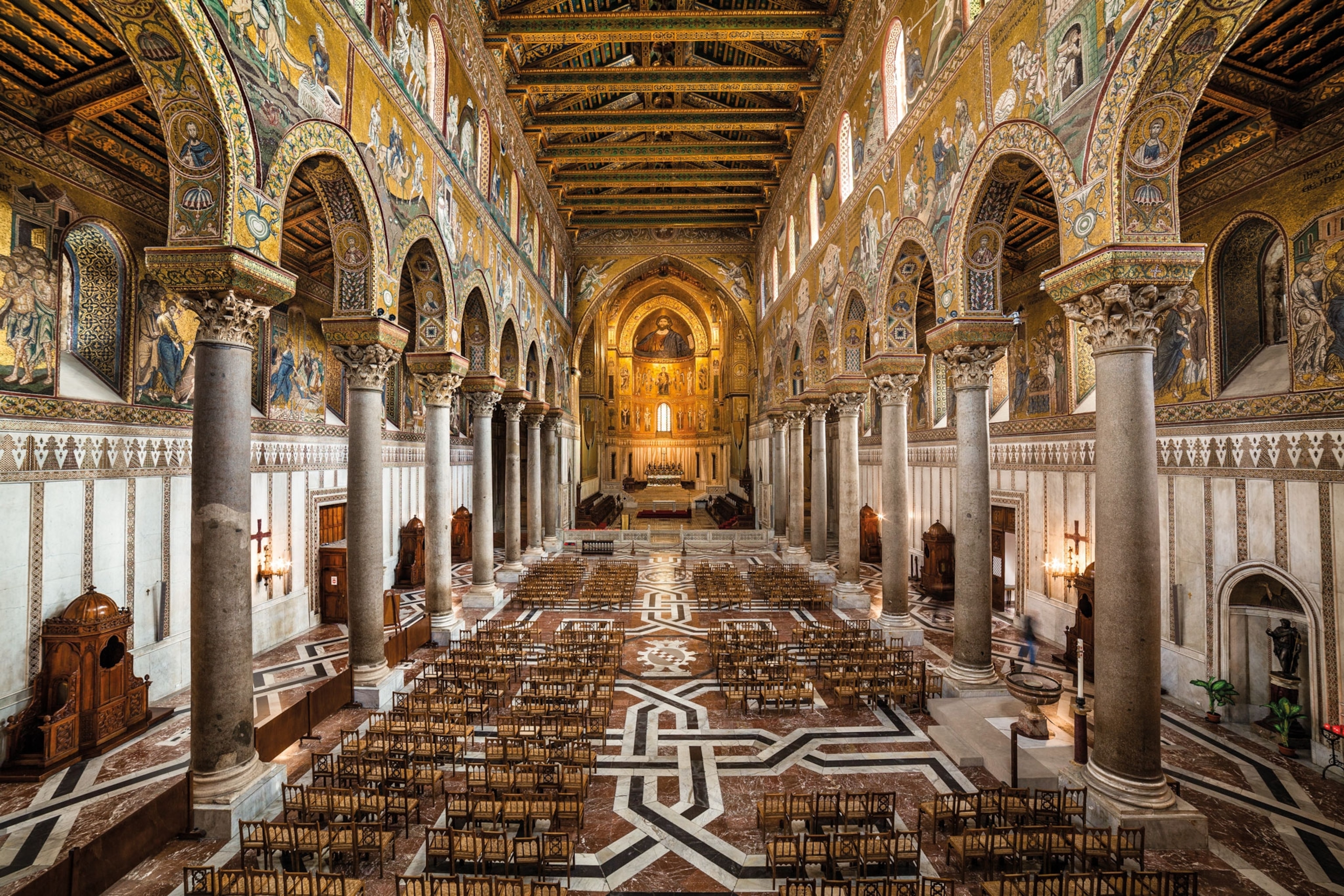
Pilgrims' progress
The popularity of pilgrimages was a key factor in the spread, and uniformity, of the Romanesque style. To travel to Jerusalem was far too difficult for most pilgrims. A European destination was much more realistic. One that gained widespread popularity in the 11th century was the shrine of St. James in northwestern Spain. (Learn about the centuries-old pilgrimage path of Camino de Santiago.)
This region of Spain had recently been reclaimed by Christian forces in the early phases of the Reconquista, Christian Spain’s gradual “reconquest” of the peninsula from Muslim Moorish powers. Tradition holds that a ninth-century hermit saw a light over open countryside marking the spot of the resting place of the Apostle James. The shrine that grew on the site was called Sanctus Iacobus (Latin for St. James) de Campus Stellae (“of the field of the star”), a name which later derived into Santiago de Compostela. (Who were the Moors?)
Artistic Visions of the Romanesque
A pilgrimage route arose as Christian travelers trekked from all across Europe to the shrine of St. James in Santiago. A magnificent Romanesque cathedral was built over the site of the tomb in the mid-11th century. Now a UNESCO world heritage site, the cathedral was expanded. The Portico of Glory, a late Romanesque, triple archway carved with ornate, painted figures based on the theme of the Last Judgment was added in the 12th century.
Medieval pilgrims brought wealth to the cities along their journey, and the cities that lay along the routes to Santiago were able to build or beautify their own churches and cathedrals in the Romanesque style. Some of these became showcases for local saints’ relics, whose fame attracted ever more pilgrims.
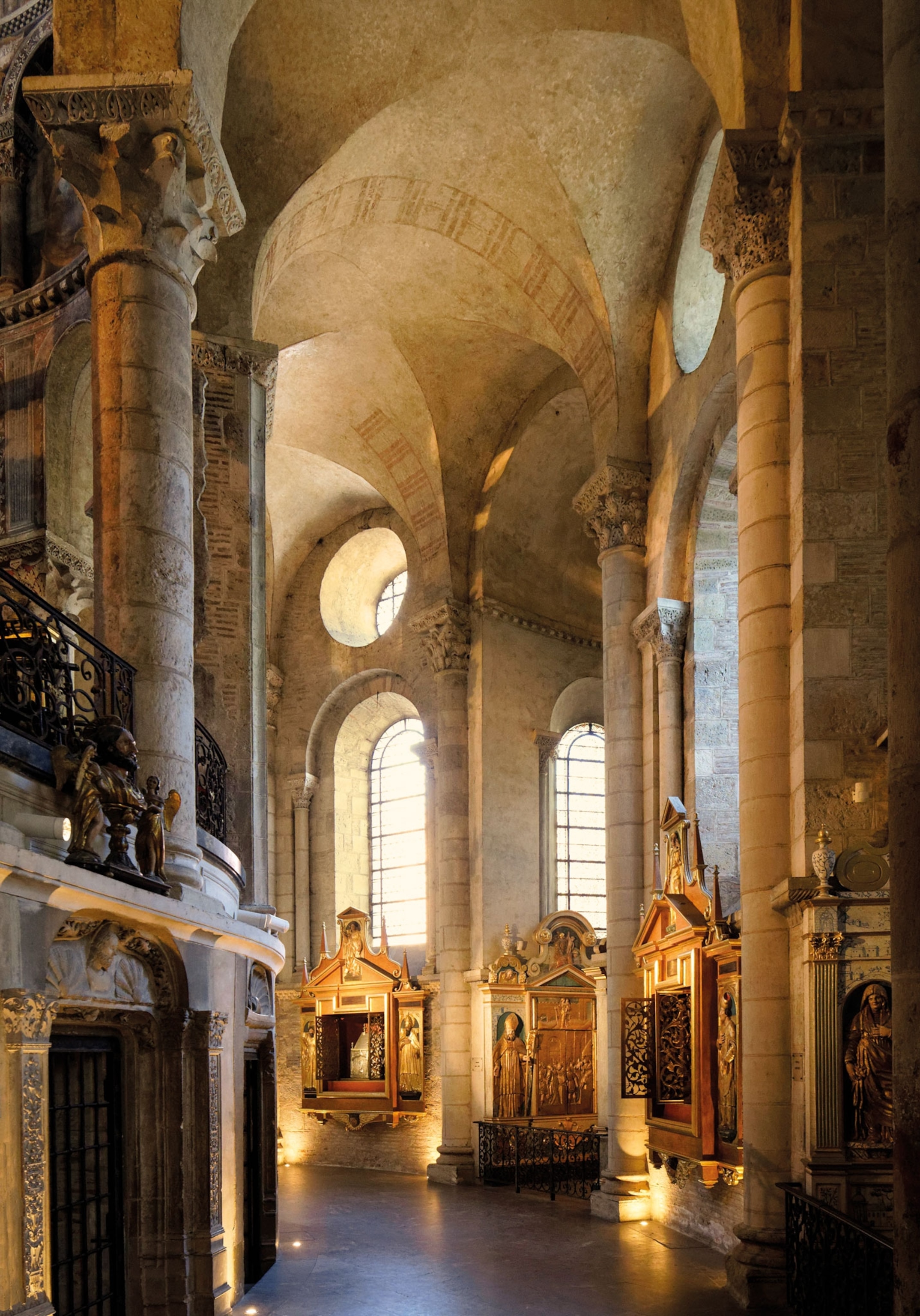
Santiago de Compostela was built almost exactly at the same time as the Basilica of Saint-Sernin in Toulouse, France. Other Romanesque structures on France’s various Santiago routes include Sainte-Foy, an abbey church at Conques in southern France, and the Basilica of Saint-Martin at Tours to the southwest of Paris. On the way to Santiago across northern Spain, a major stopping-off point was the city of León, whose Collegiate Church of San Isidoro contains a wealth of late Romanesque frescoes.
Return to stone
The Romanesque style also proliferated in Germany, with examples found at Mainz and Speyer. The Romanesque merged with other styles, such as the Norman architecture found in England following the 1066 Norman conquest. The Norman occupation of Sicily led to a fusion of north and south: The Norman-Romanesque cathedral of Monreale incorporates elements of Byzantine and Muslim architecture.
The dramatic rise in church-building that began in the 11th century was made possible in part by the revival of the production of stone for construction purpose. Stonecutting had fallen into abeyance during the early Middle Ages, when blocks from old edifices were reused. Thanks to the industry of the stonemasons, there are probably more existing buildings in the Romanesque style than of any other architectural movement in Europe, a stylistic unity that ranges across rural parish churches, abbeys, basilicas, and cathedrals.
